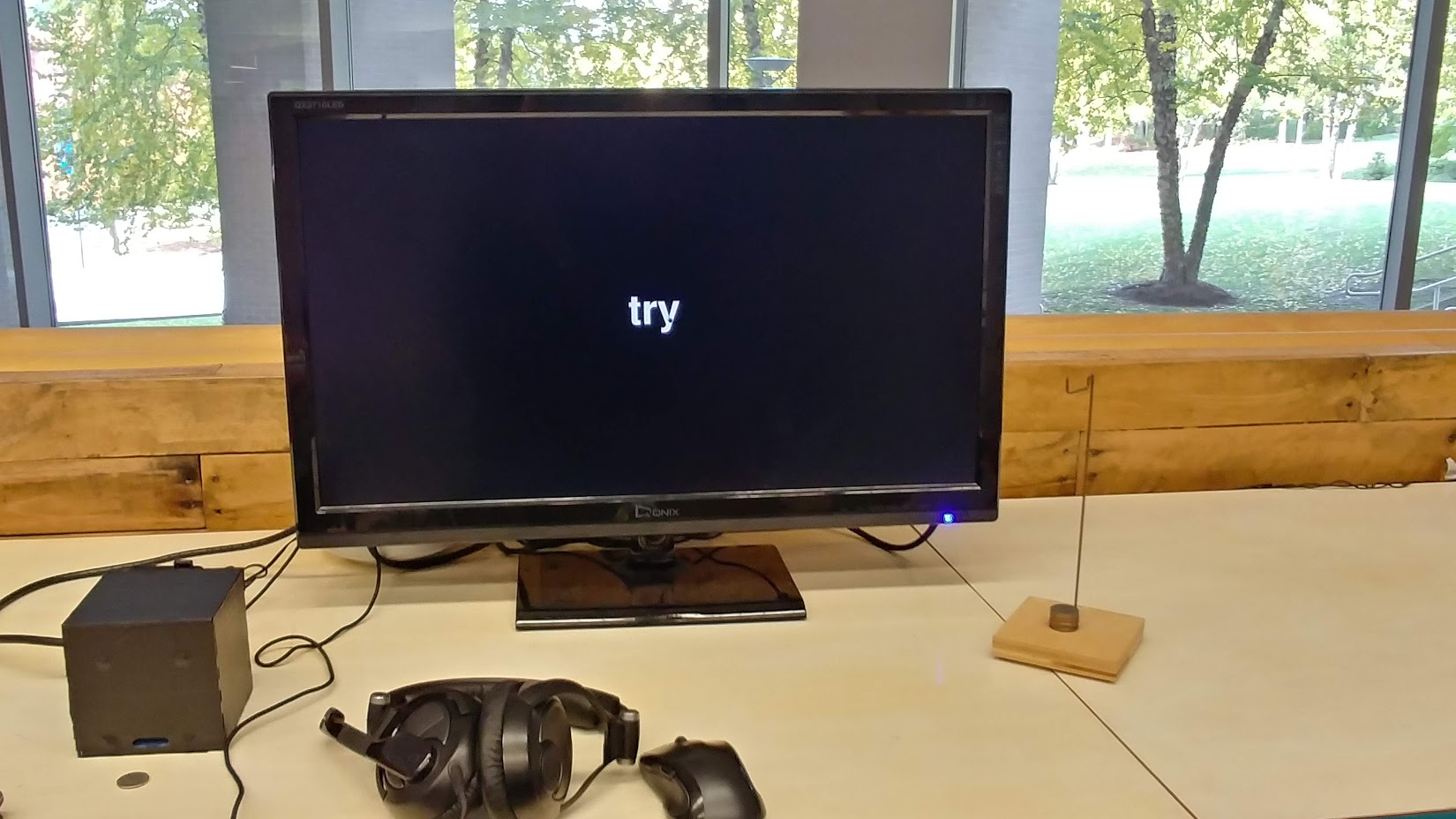What it Was
Listen & Click took the form of a Raspberry Pi set up in the Olin College library, connected to a monitor, a mouse, some headphones, and a mysterious black box. There’s a seat in front of the screen, and a camera standing nearby, pointed at the seat and monitor.

The screen is mostly white, with just the word “listen” displayed in the middle, inviting passersby to don the headphones. When they do they find a looping computerized voice saying “listen and click the word when you hear it. We value your attention.” When they click after hearing the word “listen,” the text changes to “attention.” When they click after hearing “attention,” the black box dispenses a quarter and the screen fades from white to black.
The word on the screen changes to a random word from a pool of various marketing-related words like “guarantee,” “association,” “discover,” “subliminal,” and “sex.” The computerized voice also starts reading words from the pool. Each time the user correctly clicks the word after hearing it, they are rewarded with a quarter and a new word. At first the voice has a 1 in 20 chance of reading the word they are looking for, and after each quarter the chance is halved.
Why We Did It
Our goal was to call attention to the cold reality of commoditized attention. Internet services are designed to hold our attention in order to extract value from it. Advertisers will pay for our attention, and companies who make their money by harvesting it have appeared. From their perspective, the advertisers are a black box into which you feed user attention and data, and it occasionally emits money.
Of course, not everyone’s attention is worth the same amount. In Listen & Click, when you are a new user you can make a quarter about every ten seconds. As it goes on, it can take many minutes to make even a small amount, as the computer now values your attention less than it once did.
All the while the camera sits there filming. The user has no idea who’s watching, and does not know what data we are collecting. In reality we are taking a timelapse to present in class, and we are not collecting sound. However, they have no way of knowing that.
What Happened
There was a diversity of responses to the piece. Below are some user testimonials.
One interesting thing we found was that when we stopped by to check on the piece, people had often left behind the money they had earned. We found quarters left behind in various places (pictures below). From survey responses and conversations with some people, it seemed people were unsure of whether they were allowed to or supposed to take the money. One even said the most confusing part of the interaction was where they were supposed to leave the money. While we could have made it more clear that the money was intended to be claimed by its earner, we were intrigued by this reaction. If people really felt like they deserved money for their attention, we imagine they would have taken it.

Money left by dispenser and on headphone stand.

Money left on top of black box.

Money left hidden under the monitor.
User Testimonials
“I took a quarter but was not sure if I was suppse(sic) to.”
“Decontextualizing the words brought to light how meaningless they can become, particularly in marketing/value discussions.”
“How do I load the quarters back in? I don’t want to take your money. Do I leave the quarters?”
“Immediately I recognized that I was trying to “figure it out”. What’s this installation about, what motivated it, is it supposed to be programming me, is it supposed to be reprogramming me(?)”
“What do I do with the money? I have 6 quarters and I don’t feel like I deserve them.”
“Previously, I’d say that I love me some free money but now I’m not sure if I do.”